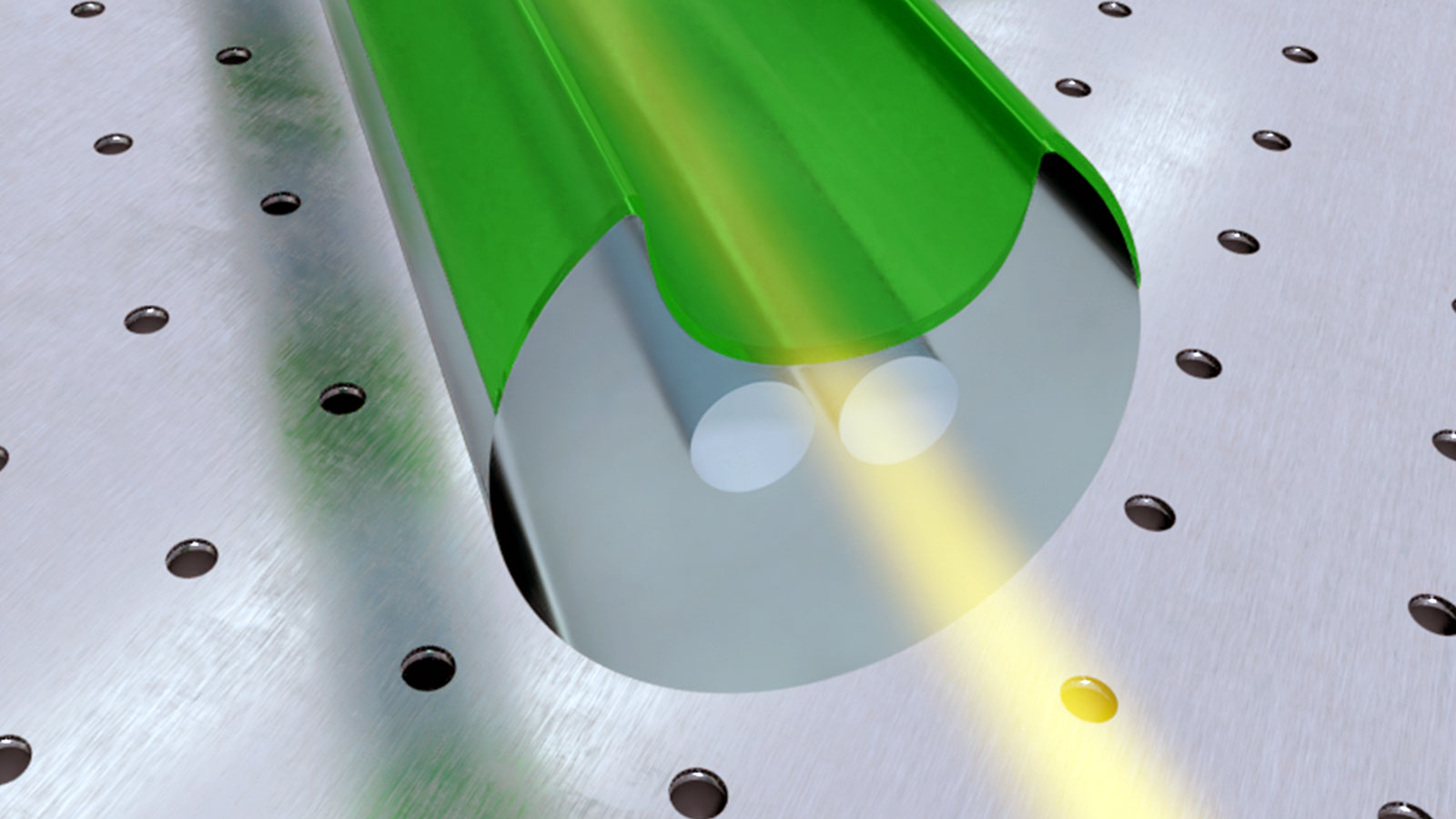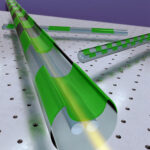- Home
- Research
- Fiber Photonics
- Research results
- Tailored Multi-Color Dispersive Wave Formation in Quasi-Phase-Matched Exposed Core Fibers
Tailored Multi-Color Dispersive Wave Formation in Quasi-Phase-Matched Exposed Core Fibers

07.09.2022
Nonlinear frequency conversion is a tool for providing light with tailored properties. Researchers at Leibniz IPHT have developed a completely new approach in the field of nonlinear frequency generation and present a previously unknown effect in photonics.
Tilman Lühder and Markus A. Schmidt together with co-workers from Leibniz IPHT have succeeded in demonstrating that periodic modulated resonances can be inserted into microstructured fibers using thickness-modulated nanofilms. This arrangement results in a novel dispersion tuning scheme, which leads to narrowband multicolor features in the generated supercontinua and access to previously inaccessible dispersion landscapes, resulting in new opportunities for nonlinear frequency conversion.
One form of supercontinuum generation with ultrashort light pulses is based on the fission of solitonic states and the emission of excess energy into so-called dispersive waves. This effect correlates significantly with the dispersion of the underlying waveguide. This light conversion concept is well established in the context of fiber optics, although new approaches are needed for future advancements of the field.
One such innovative approach was recently investigated:
For the study, the Jena scientists selectively coated exposed core fibers from the University of Adelaide, Australia, with tailored dielectric nanofilms. Crucial to this was the periodic modulation of the thickness of the films along the fiber with lattice constants in the millimeter range. The nanofilms have a higher refractive index than the fiber, which thus results in additional waveguide-based resonances that significantly alter the dispersion of the fiber core mode. This sophisticated type of modulation leads to an additional term in the dispersive wave phase-matching condition due to the additional momentum provided by the grating – an effect that has remained unexploited in the context of ultrafast supercontinuum generation. Experiments have shown that narrowband frequency features outside the typical range of solitons and dispersive waves could be generated for the first time by the special type of modulation. One characteristic of these features is their temporal length, which is in the femtosecond range.
The results were published in the journal ADVANCED SCIENCE.

